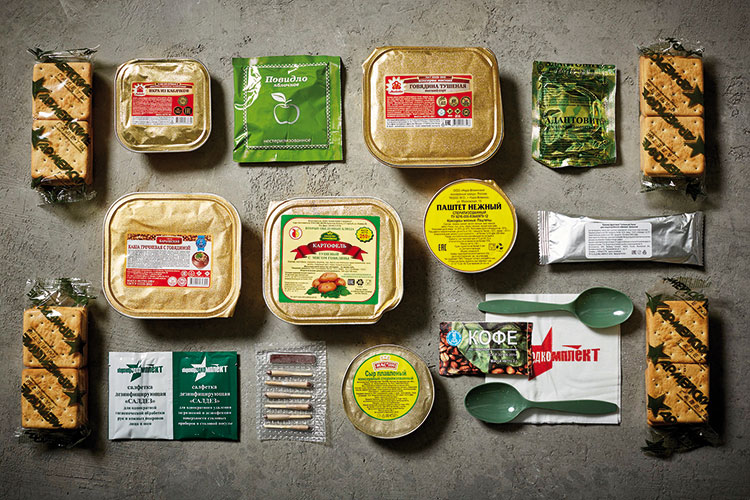From “ready dish” to convenience food
Habits, figures and trends related to packaged food with a high service content. Insights on the Italian market and on the wide margins of development envisaged, which the packaging industry will be able to benefit from. Barbara Iascone

Ready to eat foods, with or without a quick preparation: ready to use, therefore, or semi-prepared (only requiring heating for example) or again frozen and that still require cooking.
Popular abroad for a long time, convenience foods are also becoming established on the Italian market, mainly in large retail outlets but also through delicatessens and, lastly, via online purchases that are increasing sharply.
In Italy the phenomenon has established itself above all to replace the “usual sandwich” during the lunch break with a food considered healthier and tastier, and also cheaper when compared to lunch consumed at the restaurant.
Abroad the phenomenon is even wider and also involves domestic habits: according to some analyses covering central and northern Europe, only in one house in three is cooking done every day.
In recent times the use of ready meals has also been linked in some way to the economic crisis. This is the case, for example, in Germany, where the reduction in consumption has led people to more frequently replace restaurant dinners in favor of important quantities of ready-made or more often semi-ready meals to be consumed at home.
In Italy: an expanding phenomenon
The most significant target for convenience food is still that of singles, although, in the case of “ready to eat”, one should consider the “curiosity factor”, especially with regard to ethnic foods, difficult to prepare but now widely available also in Italy. Suffice it to say that in 2017 sushi consumption alone increased by almost 50%.
The range of convenience products is wide and diversified (from appetizers to desserts).
Like any new growing market, it shows double-digit growth rates: in 2017 in Italy growth in volume should be around 12%, which becomes 15% if we look at the trend in value.
As often happens in terms of food, in Italy the market for ready meals has characteristics all of its own: in this the Italians do not deny themselves and demand high quality, a wide variety - that respects and reflects the habits of the Mediterranean diet - and healthy foods.
One should consider that according to the Nomisma study “International trends in the fresh cut convenience produce market”, Italy is the European Union country with the highest per capita consumption of fresh cut produce (washed and cut fruit and vegetables): 1.6 kg per year (just under 3% of total vegetable sales) versus 1.4 kg in the UK and 0.5 kg in Germany.
In Italy in 2017 12,647 t/000 of convenience products were packaged, with 80% attributable to first courses including frozen foods, ethnic first courses and soups. 12.7% is accounted for by fresh cut convenience fruit and vegetables (salads, fruit salads, cooked vegetables, etc.). Fresh fish products include both starters and main courses - sushi is not included among this listing - and account for 1.3%. The frozen food listing (1%) includes pizzas, while the “other” listing (5% of the entire convenience food range) includes various meat-based preparations (veal in tunafish sauce, meatballs, various stews, etc.), savory pies, sushi and desserts.

The right packaging
Given that these foods are high in service content, their packaging has to be likewise (the food must be stored in an optimal way, respecting the organoleptic qualities and shelf life, which can go from one day to several months, as in case of deep-frozen products).
Analysing the Istituto Italiano Imballaggi database, it is clear that in this market area, in 2017, about 473,000 tons of primary packaging were produced. If we add secondary packaging, or carton boxes used mainly in the frozen area, the figure reaches 480,000 tons.
As for the packaging in direct contact with the product, it is totally made out of plastic. The typologies used are in fact the trays in PET and/or polystyrene (85%) and the pouches and trays in flexible polylaminate (15%).
The total packaging used for packaging products in the convenience food sector (trays, bags and pouches) accounts for some 34% of total plastic packaging used in the food sector (excluding beverages).
• Trays. They are mostly made of PET, but we also find trays in laminated converter flexible materials: intended for various types of products, they have the characteristic of being printable and have a thickness of not more than 0.2 mm.
• Pouches. They are made in laminated converter flexible materials and are used to package fresh cut convenience fruit and vegetables.
• Closures. Used on the trays of ready dishes, they are made 90% in laminated converter flexible film and are heat-sealed to the tray. They enable the storage of products with a shelf life of more than 48 hours and all foods packaged in modified atmosphere.
In all other cases a plastic film or a lid of the same material as the tray can be used.
Barbara Iascone
Istituto Italiano Imballaggio

















